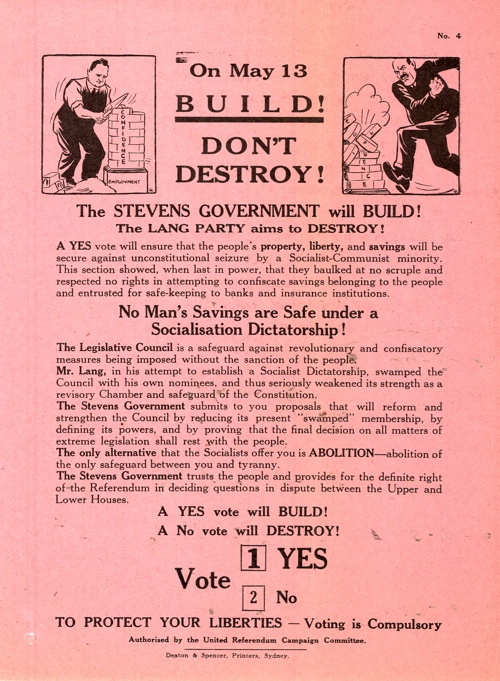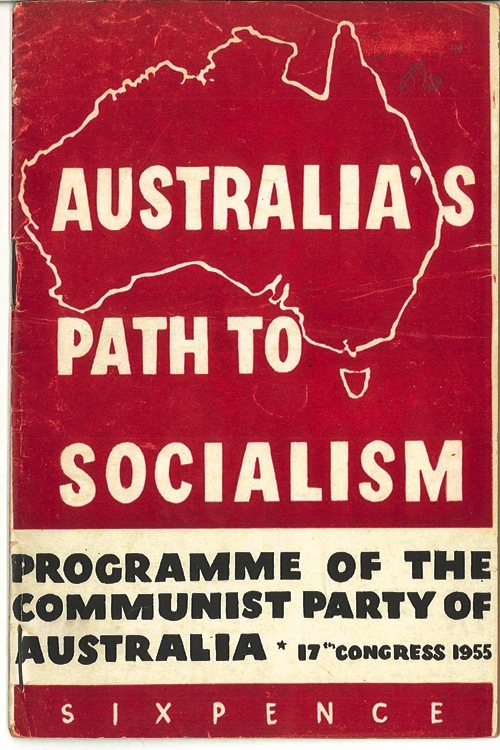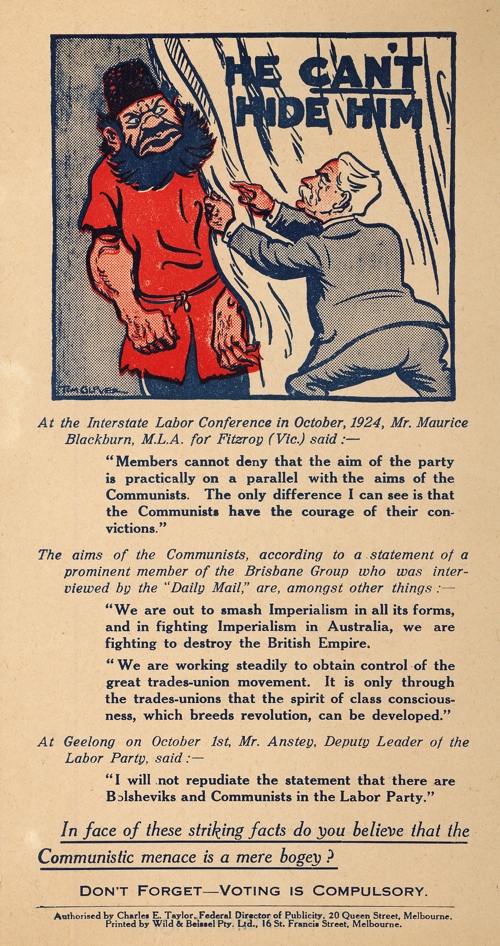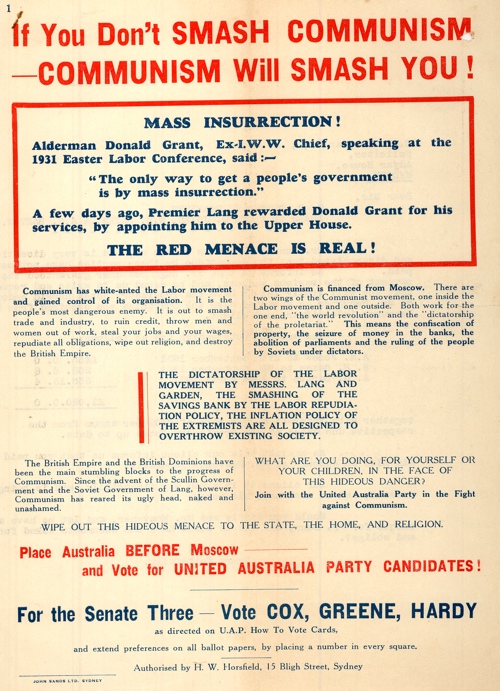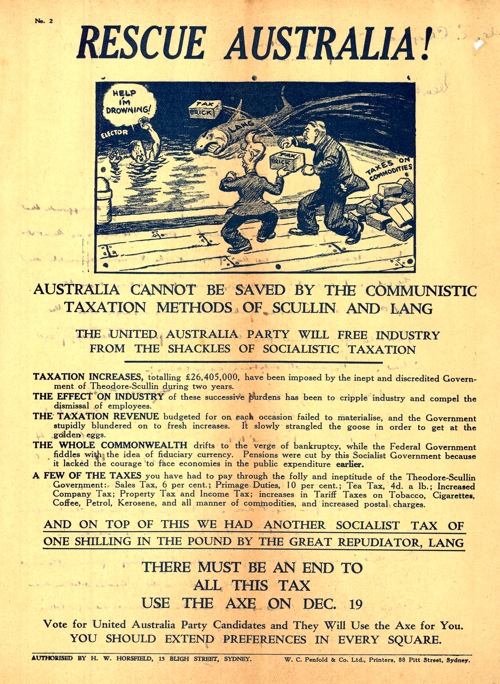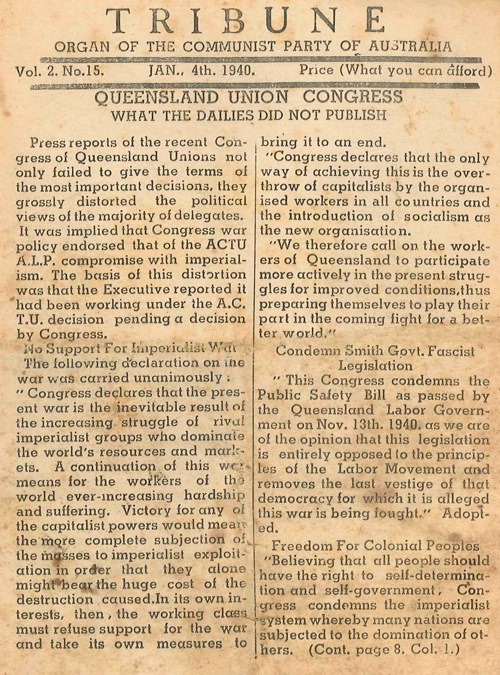Nothing To Lose But Your Chains
The artists that created the Eureka portfolio belonged to the Melbourne Popular Art Group. Although not a part of it, the MPAG had strong connections to the Communist Party of Australia. Founded in 1920 by a group including Jock Garden and Adela Pankhurst (daughter of Emmeline Pankhurst, the British suffragist), the CPA advocated a socialist state in Australia. Their primary methods were standing in elections and controlling trade unions. They had more success in the latter, though one Communist, Fred Paterson, served in the Queensland Parliament.
By 1954, the Party had been banned once, during the Second World War (having opposed the war until the Soviet Union became involved in 1941) and in 1951 narrowly escaped the Menzies Government’s attempt to outlaw the party again. Its federal Secretary-General, Lance Sharkey, had been convicted of treason in 1949, jailed for just over a year for having suggested Australian workers would welcome a Soviet invasion. By this point, the Party’s membership had declined from a height of 23,000 during the war to about a fifth of that, and was determined to find new ways to spread its message. The Eureka portfolio was one way they found to do that—using art as their weapon.
1954 was the height of the Cold War. For this reason, Communists were often viewed with suspicion; many suspected they were more loyal to the Soviets than to their own nation. The ‘threat’ from Communism led to the attempted ban in 1950-1951, which was eventually overturned by the High Court. Despite being allowed to operate legally, the Communist Party was closely watched by intelligence services.
In 1954, the same year as the MPAG produced the Eureka portfolio, Australia was rocked by the defection of Soviet diplomat Vladimir Petrov. The ‘Petrov Affair’ brought renewed focus on Communism in Australia, and led to a Royal Commission into espionage, which the CPA claimed was politically-motivated. The Commission alleged communist agents working for the Leader of the Opposition, H.V. Evatt. The affair took place shortly before a federal election, which was fought largely over the issue of communism. The Menzies government was narrowly re-elected. More about the Petrov Affair can be found on ourPetrov Affair website.
Many of the members of the Melbourne Popular Art Group were Social Realists. Social Realism is an art movement which believes in using art to draw attention to the conditions and circumstances of the poor and working class. The movement was particularly prominent in the United States, including such artists as Grant Wood, Dorothea Lange and Thomas Hart Benton. Noel Counihan, who was the most prominent member of the MPAG, was a strong Social Realist. Social Realism was for obvious reasons strongly linked to socialism and communism, which is why the Communist Party chose to use Social Realists like Noel Counihan in their art and propaganda.
